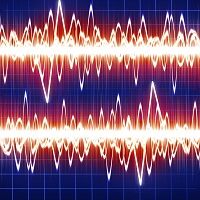Article
Personal Monitoring Devices for Epilepsy Debut
Author(s):
Could personal monitoring devices give patients with epilepsy advance warning of seizures? An array of such gizmos is already available and more are coming.

Personal monitoring devices to help track patients' subclinical seizure activity -- both as a way of giving them advance warning of a seizure and of helping clinicians see if anti-epileptic drugs are working -- are now available. Reporting at the American Epilepsy Society 69th Annual Meeting in Philadelphia, PA, researchers presented findings on the latest entrants into this growing device manufacturing niche. If successful, the devices could help keep patients out of expensive inpatient video monitoring units.
Researchers from the University of Utah Researchers from the University of Utah and Epitel Inc. described an inexpensive, disposable and discreet seizure-monitoring device called the EEG Patch. According to the authors, the patch is waterproof and relies on two electrodes to record EEG data during all aspects of everyday life, including bathing, sports and sleep. The device can operate for seven days on a single charge, and data can be downloaded anytime for review in the standard European Data Format. An epileptologist must position the device on the scalp at a known seizure-prone area of the brain identified by a traditional wired EEG.
“Armed with seven-day, location-specific EEG data, an epileptologist will have a robust record of quantitative seizure counts to better treat patients, revolutionizing therapy,” said author Mark Lehmkuhle, PhD, an assistant professor of neurosurgery at the University of Utah.
In a second study a device capable of detecting and recording generalized tonic-clonic seizures (GTCS), known as the Brain Sentinel GTC Seizure Detection and Warning System, was described by researchers from Brain Sentinel and the Medical University of South Carolina, Thomas Jefferson University, the Cleveland Clinic, the Mayo Clinic, Children's Hospital of Philadelphia, Emory University, the University of Pennsylvania, NYU Comprehensive Epilepsy Center, University of Minnesota and the Texas Health Research & Education Institute.
The authors reported the results of a Phase III, double-blind, prospective multicenter study of the Brain Sentinel System, which is meant to continuously detect and record surface electromyography (sEMG) and audio data from a device worn on the biceps muscle. They reported that the device can detect seizure activity with 100 percent sensitivity and a very low rate of false detection, compared with video EEG detection in epilepsy monitoring units at 11 level IV epilepsy centers in the US. According to the authors, the system sends alerts within an average of a few seconds after the onset of the GTCS. The device is currently under FDA review.
“The Brain Sentinel system can detect GTCS with a similar sensitivity as epileptologists reviewing vEEG recordings,” said study author José E. Cavazos, MD., PhD, co-founder of Brain Sentinel and a professor of neurology at the University of Texas Health Science Center in San Antonio. “Neurologists will have ambulatory EMG data to help them interpret the seizure type and an accurate seizure frequency of their patients.”
A third study examined the accuracy of two commercially available devices worn on the wrist that detect seizure activity based on changes in heart rate, arterial oxygenation and electrodermal activity. Researchers from the University of Texas at Dallas and the Texas Epilepsy Group studied 20 patients admitted to a Dallas, Texas Epilepsy Monitoring Unit, gathering data from a total of 24 seizures that occurred during 355 hours of monitoring. Their findings showed that seizure detection using the device's metrics was more accurate than detection by heart rate changes alone.
“These findings may allow for the development of a comfortable, easy-to-manage wrist worn device capable of recognizing seizures, alerting a caregiver and creating an electronic diary for use by physicians,” says author Diana Cogan, a graduate student at the university.
The American Epilepsy Society does not endorse devices, but summarized the research on the three monitors in a news release.




